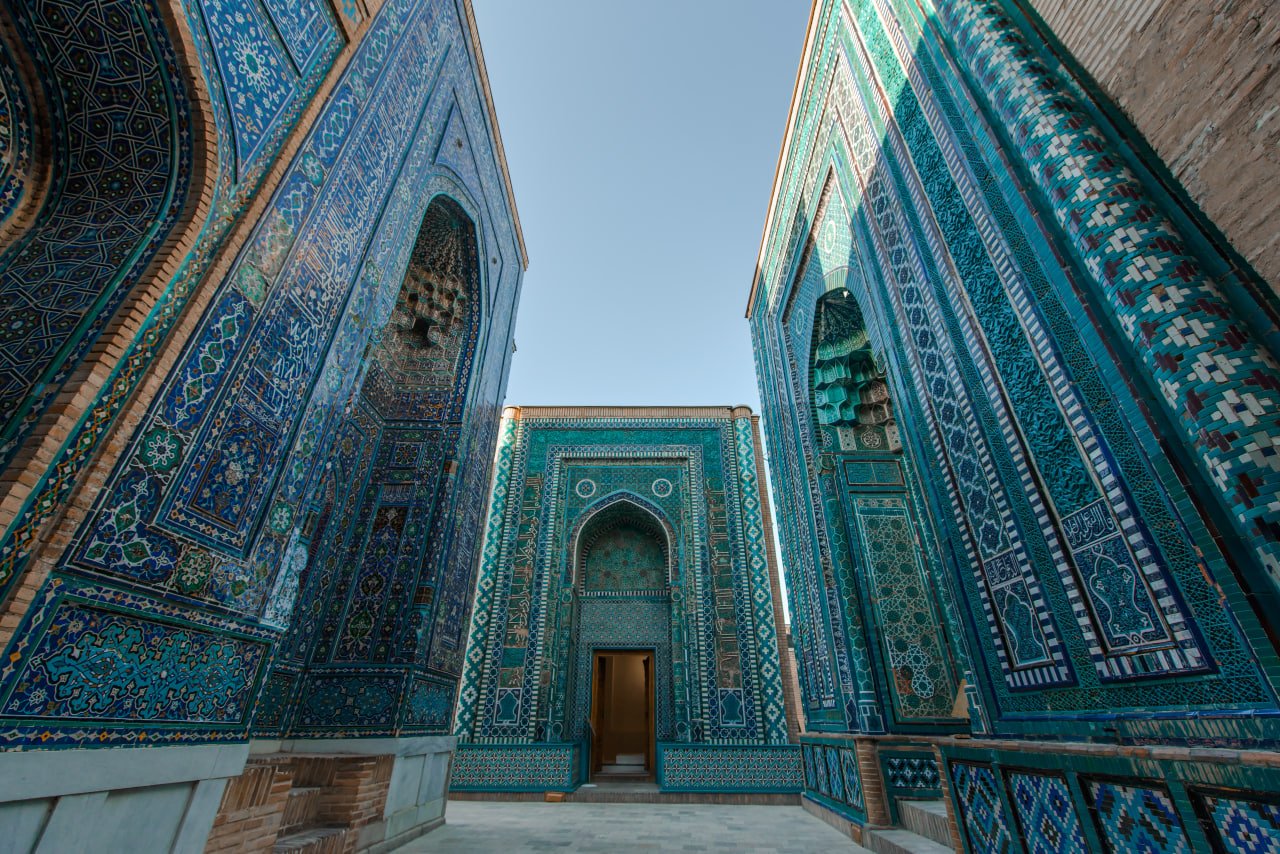Uzbek structures
Uzbek designer and architectural historian Munis Nur explains some of the symbols of Islamic architecture most often seen in Uzbekistan.
Photos by Mukhiddin A Lee
With the spread of Islam across Central Asia in the 7th and 8th centuries came significant changes in architecture. Geometric harmonisation of spatial structures and architectural and artistic forms (studied in detail by academician M. S. Bulatov) became the main method of transmission of the Islamic worldview. Each form in architecture acquired sacred meaning and conveyed the Islamic notions of beauty and cosmopolitanism.
These features are seen across many regions influenced heavily by Islamic design and are more broadly referred to as Persian architecture. They characterise some of Uzbekistan’s most prominent and recognisable buildings, including the Shah-i-Zinda necropolis and Registan in Samarkand and the many ornate madrasas of Bukhara. Here are some features to look for.
Portals
Another distinctive feature of Islamic architecture in Central Asia was the peshtak, a rectangular entrance portal with a lancet arch, which was used in medieval mosques, madrasas, mausoleums and caravanserais. The peshtak always faced Mecca, and in mausoleums, it isolated the tombs from prying eyes. The peshtak always featured a rich concentration of decoration.
Four
The number four has sacred significance, hence the presence of quadrangular shapes in the architecture and garden art of Islam. For example, charbagh (meaning "four gardens") are quadrilateral gardens divided into four parts by walkways or flowing water. The number four represents the four cardinal directions, the four elements, the four seasons and the four rivers of paradise from water, milk, wine and honey. A cube is a three-dimensional form of the number four, representing three-dimensionality or the Earth. Uzbek architecture features many forms of multiples of four (rectangular or square in plan or shape, such as the peshtak, or a cubic form found in mausoleums, etc.).


Octagons
As a multiple of four, the same sacred meaning is given to the number eight and the octagon. A prominent example is the unknown octagonal mausoleum in the Shah-i-Zinda complex in Samarkand. It is also mentioned in the Qur'an that the heavenly throne of Allah is an octagon supported by eight angels.
Plasterwork
Ganch is a type of ornamental carving of wood or plaster at shallow depth into detailed patterns. It originated in Central Asian architecture and is seen very often in wall panels in Uzbek madrasas and mosques. Though sometimes carved into wood, ganch is most often a form of plasterwork that is carved once it is dry. Sometimes it is left white, while other times it is painted in bombastic colours.
Minarets
Minaret, from the Arabic word manara, means ‘a place to light a fire, a beacon’. A minaret is a tower containing a staircase facing upwards, forming a metaphorical ‘route to Heaven’ – a symbol of connection with the cosmos and the link between Muslims and Allah. Building a minaret symbolised the incorporation of the surrounding land into the world of Islam, and the structure itself became the spiritual guardian of a city.
Domes
The most characteristic element of Islamic architecture is the dome. We know from architectural history that domes were used in ancient Mesopotamia, Persian, Hellenistic, Chinese, Byzantine and Italian Renaissance architecture. The dome is an allegory of the sky above the Earth. The origins of this allegory go back to Tengriism, a medieval religion of the Turkic peoples. Domes in Uzbek architecture are often painted and carved ornately using many of the techniques below
Ornamentation
Islam prohibits the depiction of people and animals, so ornamentation plays an important role in Islamic culture as a means of artistic expression. It is divided into two types: girih or geometric ‘knots’ – a continuous geometric pattern that has a net-like structure; and islimi, a vegetal (plantlike) pattern. Girih is meant to conjure the structural order of the universe; it is an expression of sacred beauty. Islimi, on the other hand, brings the viewer closer to nature and conjures the feminine nature of the universe.
Some scholars have identified calligraphy as a third type of ornamentation. It is often combined with girih or islimi to form arabesques (intertwining plants and abstract curving motifs) of incredible beauty, a synthesis of science and art.
Sacred honeycomb
Muqarnas, or stalactite vaults resembling a honeycomb, are found in traditional Islamic interiors or entryways. They were primarily used to visually transition between straight walls and domed rooms. Muqarnas convey a fractal reproduction of a primary element through its smaller parts, or the concepts of macrocosmos and microcosmos. Muqarnas conjure the idea of honey-making as abundance achieved by hard work.
Colours
Because of the aforementioned prohibition on depicting people and animals in Islam, colour takes on particular importance in Islamic art. For example, gold is a symbol of wealth, fame and success. For example, Amur Timur’s Gur-i-Amir tomb in Samarkand is lavishly adorned in gold. Green is a symbol of Islam – it was considered sacred (the prophet's green flag) and symbolised an oasis, nature and life. Blue and turquoise are the colours of heaven and are used as a reflection of God, divine grace and paradise. These colours are often seen in domes and decorative majolica.









